“It’s basically about the sad-eyed joy of hooking up. Kind of a sexed-up Carson McCullers story.
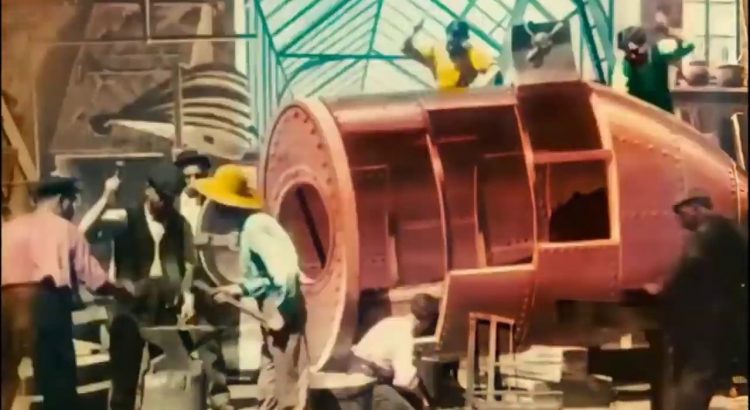

“It’s basically about the sad-eyed joy of hooking up. Kind of a sexed-up Carson McCullers story.
METAL DAD, COMPENDIUM TWO IS NOW AVAILABLE.
SPIFFY PAPERBACK AND KINDLE eBOOK: 180 COMICS, ONE NEW ESSAY, ONE FAQ, ONE FOREWORD, ONE Q & A, PLUS LIKE 10 NEW BULLSHITS!


…GET IT AT AMAZON! SHIPS FREE WITH PRIME!
I’m bringing the mope this week, love birds. If I know anything about love, it’s that it dies a slow, painful death when the month of February rolls around. Seriously, for two Februarys in a row in college, all of my friends and I saw our relationships come to an end. The following year, we threw a party to celebrate it, and that annual party tradition carried on for another ten years. The breakups, thankfully, didn’t.
Bands making their DH debuts this week include Alison Moyet, The Bangles, Deon Estus, David Gray, Elliott Smith (what), Kate Bush (WHAT), Simply Red, Vitamin Z, and World Party. Wait, really? Sorry, Mr. Wallinger. I just assumed I had played you by now.
The March show is still being built, but I’ll give you a hint as to its theme: the giant crab in “Moana” would approve.
Thank you, as always, for listening.

“Better Man” from Zach Vinson’s forthcoming album And Yet (available on April 26th, 2019) arrives just in time for Valentine’s Day. The album explores less-charted relationship ground: what does it look like to stay in love; to stick it out when it would be easier to throw in the towel? These aren’t easy questions, but the lyrical content looks for meaningful solutions.
On “Better Man”, Zach takes a hard, honest look at himself as he sings: “…I don’t know what you envisioned / Please tell me what you dreamed / I never learned to pretend I’ll be a better man than I’ll be.”
It says a great deal – which makes it all the more worthwhile to give it a listen.
“Better Man” is released as a single on Thursday, February 14th, 2019
Holden Laurence, guitarist for cinematic pop darlings, The Modern Electric, will soon release his second solo album, Rewire. It promises to be essential listening for fans of The Smiths, New Order, Echo & The Bunnymen, The Killers, and The Wild Swans who are looking for something fresh, new, and exciting to get into. Whether you’re falling in or out of love, or staring dreamily at the stars knowing he, she, ze or they are out there looking for you too, the songs on Rewire (along with his debut Wild Empty Promises) will fill your mixtapes and playlists with plenty of edgy, melodic, romantic, and darkly epic earworms.
At the stroke of Midnight last night, Laurence released the album’s first single, ‘Shadows of Old Love’:
Naturally, we here at Popdose were over the moon about it and wanted to learn more…
POPDOSE: This is your second solo album — both of which have been released in the gap since the last The Modern Electric album. Are the lines blurring between which project is a day job versus a side hustle?
HOLDEN LAURENCE: The frequency of releases has more to do with the pace of each project’s creative process than some kind of hierarchy of importance. I write, arrange, demo, and record my solo material pretty much all on my own. I bounce ideas off of my drummer, Michael O’Brien, and he lets me know when I’m closing in on something special. Otherwise, the writing and editing process is streamlined and self-contained. The Modern Electric operates in a more democratic fashion where Garrett (Komyati, lead vocals, piano, guitar) brings us the skeleton of a song and we work together to flesh out parts and push the arrangement in different directions. Over time our individual visions organically coalesce to form a unified work, which is greater than the sum of its parts.
As of right now, the success of one project hasn’t limited my ability to be fully invested in the other, but that’s a complication that I’d welcome.
Based on the influences within this album, we grew up a generation apart while loving the same bands — the Smiths, Dire Straits, Echo, the Church, etc. … how did you first discover all of these bands (and let me know about others) — as opposed to the acts topping Billboard during your childhood? I assume by the time you were discovering music, MTV was no longer playing any…
HL: It actually took me awhile to stumble upon the early alternative influences you hear in my solo work. My musical tastes growing up were largely influenced by my mom and my uncle. My uncle had a killer classic rock record collection; The Beatles, Frank Zappa, and everything in between. I started playing guitar when I was pretty young and I gravitated toward bands like Pink Floyd, Dire Straits, Fleetwood Mac… bands with guitarists that had great ears for melody. When I got a little older and started writing songs, I fell in love with Folk and Americana; John Prine, Townes Van Zandt, Paul Simon, Leonard Cohen, etc.
When I was a kid some of the mainstream New Wave artists were still getting radio play, like The Cure and New Order. So those sounds were swirling around my head at a really young age but I kind of forgot all about them for twenty years. Toward the end of college I bought The Queen is Dead by The Smiths at the suggestion of a friend and it was a revelation. So down the rabbit hole I went. Disintegration by The Cure, Unknown Pleasures by Joy Division, Organisation by OMD, Dare! by The Human League, Power, Corruption, and Lies by New Order… I felt such an intense kinship with those artists and it was different than my connections to other music. The romanticism, the vulnerability, the fragile humanity… and so much of the heavy content was offset by upbeat, driving music. I just loved the complexity and contradictions.
I’ve been writing songs for over a decade and tried on multiple occasions over the years to start bands. But every time I did none of the styles or sounds I explored felt right. It wasn’t until a few years ago when I started filtering my songs through those newly rediscovered early alternative influences that something clicked. I finally found my voice as an artist and it was liberating. I could write about heavier content and frame it in a way that kept it from getting overwhelmingly dark.
It seems like this record, like the last one, would go over much bigger in Europe than it would the States where commercial radio is stagnant, leaving only NPR and College Radio to introduce your music to new audiences. Will you be contacting indies for potential distribution deals? Same with the likes of Jools Holland and various BBC shows…
HL: I’ve reached out to some labels based in Europe and I would absolutely love to get some kind of distribution deal in the works. A substantial amount of my Spotify listening base is young adult Europeans, so it would be really helpful to have a label partner overseas to get my music in front of a wider audience.
How goes the radio reception here in the states?
HL: Regional college radio stations have been really, really supportive of Wild Empty Promises. I can’t say enough good things about my friends at WJCU, WRUW, and WKSU. I’m planning a much wider push with Rewire and hopefully it yields a similarly enthusiastic response, just on a wider scale.
Like many of my beloved Sire bands back in the day, your songs are very romantic and honest — do you write from the POV of fictional characters or does this album chronicle a real-life courtship and/or breakup? Did you ever get the girl?
HL: On Rewire, I pushed myself to be more vulnerable and honest lyrically. I always write from a foundation of truth. Sometimes it’s literal and sometimes it’s a patchwork of my own experiences combined with external observations. Songwriting is a form of therapy for me. I like to find points of discomfort—painful memories, broken relationships, insecurities and holes in my self-esteem, harmful personality traits… and lean into them. I like to sit in that discomfort for a while and try to exorcise it like a demon. It weakens its negative power in my life and if I do it in an interesting and honest way it creates something relatable for listeners. Most of Rewire was written during a tumultuous period of my life after a messy break up when I was trying to figure out who I was, who I wanted to be, and how to move forward in life.
How did this album come together (producers, players), and how did its creation differ from the recording of the two TME albums?
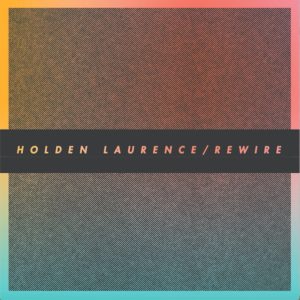 HL: Similar to Wild Empty Promises, we recorded Rewire in two parts. We recorded the basic rhythm tracks in Cleveland at Fe True Records and then finished tracking at Bobby Peru Recording Studio in Milwaukee. It was engineered, mixed, and mastered by Shane Olivo, with Dr. Michael Bell supporting as executive producer. Once again, I recruited my BFF and favorite drummer in the world, Michael O’Brien, to provide the pulse of the record. The rest was self-produced and performed by me.
HL: Similar to Wild Empty Promises, we recorded Rewire in two parts. We recorded the basic rhythm tracks in Cleveland at Fe True Records and then finished tracking at Bobby Peru Recording Studio in Milwaukee. It was engineered, mixed, and mastered by Shane Olivo, with Dr. Michael Bell supporting as executive producer. Once again, I recruited my BFF and favorite drummer in the world, Michael O’Brien, to provide the pulse of the record. The rest was self-produced and performed by me.
The Modern Electric has the benefit of recording the basic tracks live in the studio. We obviously do a lot of overdubs and layering, but it’s great to be able to build upon a super solid foundation. With my solo material, Mike and I track the drums and bass live but we rely on guide vocals and supplemental tracks from the demos to help get dynamic, natural performances. Once we get a great drum track, then I build everything around it piece by piece. It forces me to stay mindful of the overall feel to make sure it doesn’t sound mechanical or sterile as I’m layering in the different instruments.
What’s next — will a third solo project make it out before the next TME album?
HL: There’s new music in the works for both projects! The Modern Electric’s next full length is written and ready to record. I’m really proud of the material and I can’t wait for people to hear it! And I’m already scheduling sessions for my next solo release. After completing two full lengths, I’m going to release some singles/EPs. I love crafting complete albums with emotional arcs and cohesive themes but one of the downsides is that songs that aren’t highlighted as singles get buried to the general audience. By releasing singles each song gets a chance to be absorbed by fans and become embedded in their lives for a while. Plus, it gives me the opportunity to release music on a consistent basis and avoid any lulls between records, which is more conducive to modern listening habits.
What are your plans to tour and promote this record? Will TME keep moving forward in the meantime?
HL: We have the ‘Shadows of Old Love’ Single Release show coming up on February 10th at the Beachland Tavern with John’s Little Sister and The Morning Bird. We’re also planning the “Rewire” Album Release Show in mid-May. We’re working on branching out regionally this year to places like Chicago, Columbus, NYC, Boston, etc. I’m trying to perform in front of as many new faces as possible.
The Modern Electric just finished writing and demoing our next album. We’re hoping to hit the studio in 2019 and start pumping out new music in the not-so-distant future.
Gone are the days when most artists sign with a label, tap into a pool of artist development funds, and enjoy a large advance for record production, music videos, etc. How do you go about balancing real world concerns (bills to pay) while advancing your career in the DIY arena?
HL: It’s not easy. The current music business model has pretty much eradicated the “middle class” of working Independent artists and bands that existed in the pre-streaming era. For production and promotion, it forces artists to be extremely judicious in their spending to maximize effectiveness and efficiency. It also encourages close-knit local creative communities, which has always been a staple of DIY. Artists, musicians, videographers, and venues work together to raise the profile of the entire scene. The biggest investment is time. Since there’s not a huge budget for a massive team to assist in production, promotion, and touring, much of that responsibility falls on the artist. You have to prioritize your life, make sacrifices, and manage your time appropriately in order to achieve your goals, creatively and professionally.
While Rewire is due out this May, you can download ‘Shadows of Old Love‘ now. Connect with Holden Laurence on Facebook, Instagram and Twitter.
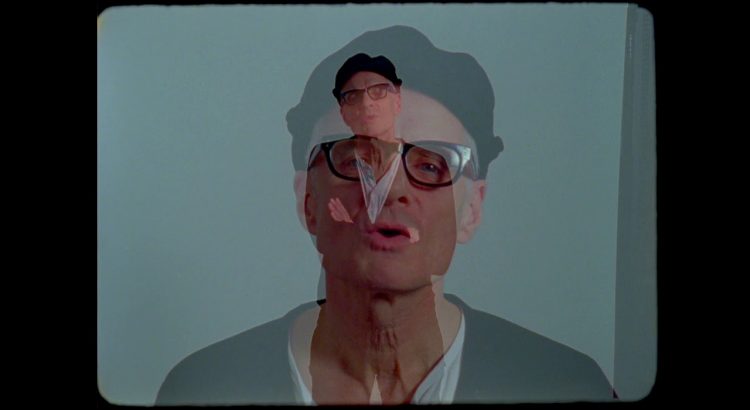
This year marks the 30th anniversary of singer-songwriter Bill Pritchard’s U.S. breakthrough, Three Months, Three Weeks & Two Days, a beloved indie-rock album featuring the college-radio hits “Nineteen” and “Tommy & Co.” Pritchard hails from Lichfield, Staffordshire, in England’s West Midlands region. The city is an hour’s drive down the M6 from Manchester, home to Pritchard’s sonic kindred cousins in the ’80s, the Smiths.
Not a lot of pop stars hail from Lichfield, but plenty of authors do, including writer Samuel Johnson, who published The Dictionary of the English Language in 1755. Literary history suits Pritchard’s music well; elegant wordplay, jangling rhythms, wry melodies, and stories of life in the Midlands influence his recent work, including his upcoming album, Midland Lullabies, his third for Tapete Records.
To herald the album’s release next month, Popdose proudly presents the video premiere of Pritchard’s new single, “Forever”:
It’s easy to zone out and lose yourself in the melody while watching the hypnotic, double-exposure video — but like much of Pritchard’s work, nothing is ever what it apparently seems. Was this done in one take or two? More? Pritchard’s melodies are usually quite hummable off the bat, but his stories can take you just about anywhere — through love and anger, darkness and light — revealing new meanings with each passing listen whether or not you get all of the local references. Besides being a Midlands favorite son, Pritchard has sizable followings in the U.S., Japan, and France.

Midland Lullabies is the third in a trilogy of sophisticated new albums by indie-pop elder statesmen who made big splashes in the ’80s and are releasing some of their best work at the close of the 2010s, the other two being Robert Forster’s Inferno, due March 1 from the former co-lead of the Go-Betweens, and Fool, now available, by another Staffordshire native, Joe Jackson.
Bill Pritchard’s Midland Lullabies is out March 8.
Love songs are great, they really are, but breakup songs are so much more interesting. And they come in many shapes and sizes, as this mix will attest. Dance tracks, indie rock tracks, Beatlesque pop, hard rock, Spector-esque bombast, jazzy pop excursions…they’re all here.
And this isn’t all: on Valentine’s Day, I am dropping a second breakup mix, this time focusing on the ballads. Two artists show up in both shows. Think you can guess who they are? I’ll give you a hint: they both worked together for years, mainly one of them producing the other.
Artists making their Dizzy Heights debut this week include Adam Ant (solo), Airborne Toxic Event, Cause & Effect, Gotye, Guns ‘n Roses, Shakespear’s Sister, Sugar, and a brand new song by the band Unloved.
Yes, I actually say ‘wifes’ in one of the talkie bits, rather than ‘wives.’ Whoops.
Thank you, as always, for listening.
![]()
Radio City With Jon Grayson & Rob Ross: Episode Ninety Nine
In another one of those inspired moments, the 99th installment of Radio City… finds Rob and Jon delivering a wholly improvised show – no planned content – just a good old fashioned conversation, between two friends who know what they’re talking about. They cover the entire spectrum, including the beloved “In Our Heads” (a really great one!), so you don’t want to miss this.
Listen in and have a good time – they certainly did!
Radio City With Jon Grayson & Rob Ross: Episode Ninety Nine
The podcast will be on the site as well as for subscription via iTunes and other podcast aggregators. Subscribe and let people know about Radio City, as well as Popdose’s other great podcasts David Medsker’s Dizzy Heights and In:Sound with Michael Parr and Zack Stiegler.
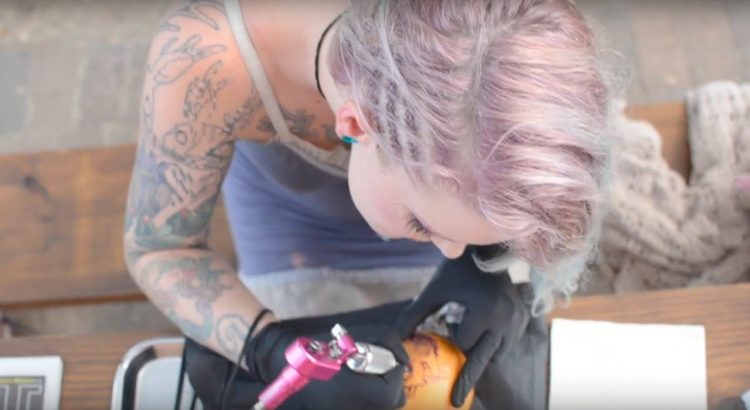

Popdose is pleased to present to you this lyric video from singer-songwriter Rebecca Loebe, “Tattoo” – a piece about what we leave behind when relationships end. It’s one of the standout tracks from her forthcoming album, Give Up Your Ghosts.
She’s earned over 50,000 fans across social media platforms over a decade of hitting the road and only now has signed to a label, Blue Corn (home to 3x Grammy-nominee Ruthie Foster). She’s a remarkable talent, a killer singer and an insightful, melodic songwriter who also gets to the core of life. She has a gift for melody so you think you’re listening to some lightweight pop songs but then the words kick in and whoa!
Give this a listen and find a place in your heads (and hearts) for it.
Give Up Your Ghosts will be released on Friday. February 8th, 2019.
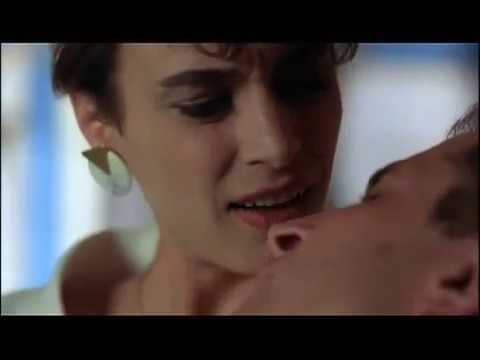
It’s been five years since Alfonso Cuarón released Gravity and won the Best Director Oscar. But with the release of Roma he’s once again the front runner at the Oscars and has caused every single film critic to spill some ink over his winning streak. Yet Roma could not be a more different film than Gravity. It’s a black and white foreign language drama about a middle-class family in Mexico City. The only glimpse audiences get of Cuarón’s previous interests is the scene where the family goes to watch 1969’s Marooned.
But there have always been two Cuaróns working in the film industry. The Hollywood Cuarón is interested in high concept fantasy films that require enormous budgets to be properly realized. The independent filmmaker Cuarón is forever stuck in the 1990s indie film boom and focuses on very specific events in Mexican history that the average Hollywood audience wouldn’t know about.
Both create equally interesting and engaging movies. But it’s hard to determine why Cuarón creates such different films that focus on such different interests. How can a director who is interested in the story of a woman in her late twenties deflowering two teenagers also spend five years making a James Cameron-esque space epic?
The answer, according to Cuarón’s debut Sólo con Tu Pareja, is very easily. The movie is a combination of Cuarón’s interest in high fantasy and his interest in intimate stories taking place in Mexico City. I started “Not-So Famous Firsts” to see if I could figure out how filmmakers treat their storytelling techniques in their first film. And surprisingly, under those guidelines, Pareja may be the best example of a directorial debut, because it’s very easy to trace the line between directing this film and directing Harry Potter and the Prisoner of Azkaban.
Sólo con Tu Pareja follows a womanizer with the Nabokovian name Tomás Tomás. He is having an affair with his boss as well as his nurse. He also is obsessed with his flight attendant neighbor. When his nurse finds out that he’s sleeping around, she falsifies a blood test to make Tomás think he has AIDS.
The premise sounds like a straightforward screwball comedy and it many ways, it is. There are scenes of Tomás sneaking between apartments so he can sleep with two women in one night – only for him to be caught on the ledge the next morning, naked as the day he was born. Tomás also makes it a habit of running down his apartment building to fetch his paper in the nude and must hide when a woman and her child interrupt his daily ritual.
The film is, at its core, a combination of Cuarón’s two types of films. Sólo con Tu Pareja is shot in the same way Marc Caro and Jean-Pierre Jeunet shot their films – Delicatessen was released the same year as this film. Pareja is about daily life in a universe that doesn’t resemble our reality. It’s shot in a Mexico City that is built on primary colors and exists in a world Tomás Tomás created for himself. Every woman is beautiful, his apartment is large, and his ritual of running down the stairs naked is completely normal.
The film also makes references to Mexico’s past, the way not only Cuarón does in later films but the way Gabriel Garcia Marquez referenced phony South American history in his novels. Tomás works for an advertising agency and has been tasked with creating a new slogan for Gomez Home Style Jalapenos. The commercials feature a man dressed as a conquistador eating them. Later, another character talks about how those peppers are “the worst” and invents her own slogans to sell them. Cuarón is thumbing his nose at his country’s history. The point of the Sólo con Tu Pareja is to discuss how people create their own identities through their own experience and not through what’s in textbooks. Trusting history to shape you is no better than an advertising executive selling a product with a slogan.
Yet there’s more. One of my favorite scenes involves Tomás having a nightmare in which he’s on an airplane and tries to escape after the people from his past come to confront him. It features Mexican stereotypes like luchadores and mariachi bands and blurs the line between fantasy and reality – only when the scene is over do we realize that it’s a dream sequence. It also foreshadows the final scene of the film where Tomás on an airplane hoping that he’s finally discovered the key to his happiness that involves abandoning his preconceived notions of the world.
Also, while Y Tu Mamá También is shot like a documentary, Sólo con Tu Pareja looks more fantastic. Practically every location is green, a reference to the e e cummings quote at the start of the movie. The film is divided into different chapters with different literary quotes, making Tomás’s story seem more like a parable than like a real memory. Cuarón’s doesn’t want to portray real life. He wants to portray a folk tale. At a time when even Saturday morning cartoons used AIDS as a plot point, the AIDS subplot in this movie is almost forgotten until much later in the film and leads to a surreal scene with Tomás trying to commit suicide via microwave. And Cuarón takes time to deconstruct screwball comedy tropes. One scene late in the film involves the gag of a child pressing every button in the elevator to prevent the characters from getting where they need to go. After a while, they push the kid out of their way and run up the stairs. Cuarón is interested in the fantastical elements of the story. He certainly abandoned some of those fantasy elements for his later Spanish language films, but these elements reinforce his Hollywood films.
Cuarón’s directorial debut is one of the more famous debuts I’ve reviewed for this series. After all, it’s in the Criterion Collection. But most people who watch Roma on Netflix still don’t know about Sólo con Tu Pareja. That’s a shame because this film sets the template for everything else in Cuarón’s filmography. If you really want to understand Cuarón’s artistic intentions, you need to watch this movie. You’ll not only see a hilarious comedy but a deeper understanding of one of modern filmmaking’s most exciting directors.